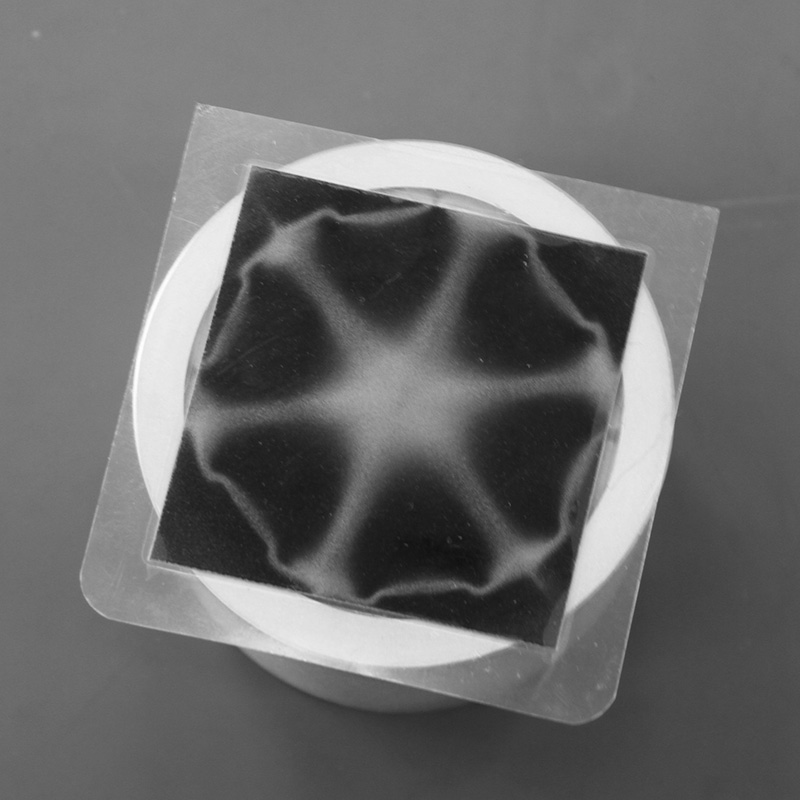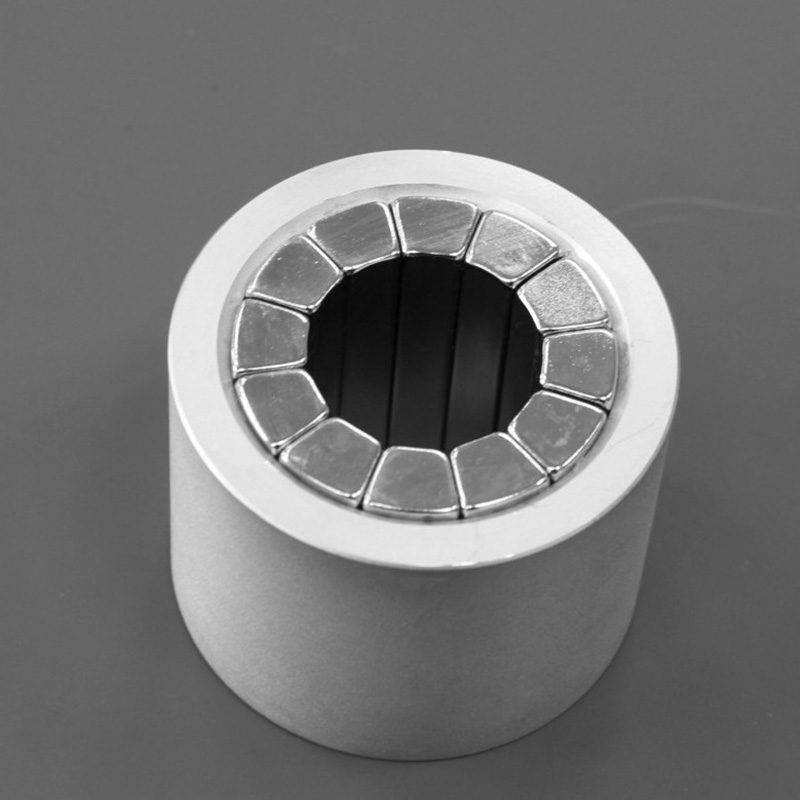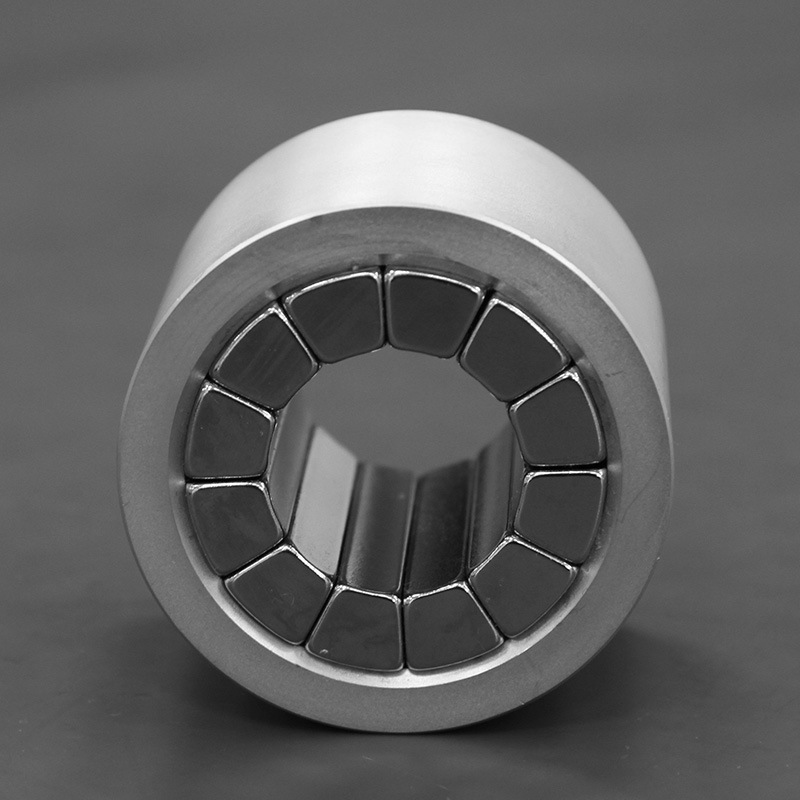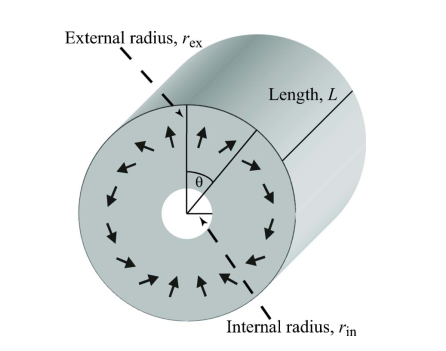AVIC Beijing Institute of Aeronautical Manufacturing Engineering Liu Fenglei Huang Hong The People's Liberation Army in Shenyang Aircraft Industry (Group) Co., Ltd. Military Representative Room Richard High-performance aviation fasteners require thread rolling after heat treatment to ensure that the thread has A favorable compressive stress state for fatigue life. High-strength fastener threads are prone to cracks, folds, etc. during cold roll forming. In addition, the tool life is low. The technical difficulties of high-strength fastener thread forming are mainly discussed, and the technical method of warm rolling forming technology is proposed. Through the hot rolling temperature parameter test, the metallographic and performance test of the test piece, and compared with the cold rolling piece, the warm roll forming has incomparable superiority in improving the quality of the workpiece and the life of the rolling tool.
With the improvement of the overall performance of the aircraft, advanced aircraft have put forward higher index requirements for weight reduction, life and reliability, and high-strength and high-ratio fasteners are needed in the connection of the main bearing structure. The materials used to manufacture high-strength fasteners for aviation have titanium alloys and high-temperature alloys with a strength grade of 11 MPa or higher. The materials used for high-temperature alloys are Inconel 718. The alloys are nickel-based superalloys, and the domestic grade is GH4169. It has good mechanical properties under the environment. After aging heat treatment, the strength grade can reach 1500MPa or more, and its strength grade is higher than that of titanium alloy. The bolts made of this material can be used for the connection of key joints of aircraft.
In order to meet the structural strength requirements of the aircraft and to play the performance of the fastener materials, the high-strength aviation fasteners use the intensified heat treatment to achieve the strength target, and then the fasteners are required to have higher fatigue life requirements, in order to meet the fatigue of the fasteners. Life requirements, thread forming of fasteners are required after heat treatment. The heat-treated fastener blank has high strength, high hardness and poor plasticity. For fasteners of Inconel718 material, the strength after heat treatment exceeds 1500MPa, the hardness reaches HRC4348, and the elongation is only 8%~14%. There is a strong work hardening phenomenon in the processing, which causes the following problems in processing: First, the life of the rolling wheel is short, rolling pieces or dozens of fastener thread rolling wheels produce chipping; second, rolling parts It is easy to cause problems such as cracks and excessive folding. This paper analyzes the manipulator from the principle of thread rolling and analyzes the causes of defects in Inconel718 high-strength bolt thread forming. A method of using warm rolling thread is proposed to solve the problem of chipping and tightening of the rolling wheel when the material is rolled. The problem that the firmware thread generates cracks and folds exceeds the standard. By comparing the metallographic structure and flow lines of the cold-rolled threaded bolts and the warm-rolled threaded bolts, as well as the fatigue strength, etc., the effect of obtaining the warm rolling thread can improve the quality of the workpiece.
1 fastener thread forming process analysis of the thread rolling of the fastener is started from the rolling of the blank, the top of the rolling wheel is pressed into the blank, as shown, the extruded material is threaded to the rolling wheel Flowing on both sides of the crown, as the depth of the rolling wheel increases, the outer diameter of the workpiece increases, the metal flow velocity on both sides of the roller head is the fastest, and the flow velocity in the middle of the valley is the slowest. To a certain extent, the metal on the side of the two-thread rolling process fills the entire bottom of the rolling wheel, and the fastener forms an external thread.
In the rolling process, the reason why the flow rate of the metal material is inconsistent is that the material flows to the shortest direction of the force-receiving path. In the flow of the rolling material, the metal on both sides of the roll top of the rolling wheel is the least hindered, so the flow speed is the fastest. As the rolling progresses, the lifting resistance on both sides increases, and the material starts to rise upward from the middle portion. However, due to the longest path in the middle portion, the material deformation must overcome the large resistance, so the metal lifting resistance in the middle portion The maximum and the slowest speed. If the material is very plastic, the material in the middle part is relatively easy to follow-up deformation. Therefore, when the full thread is formed, the top of the material is less folded, which can meet the standard requirements. For the heat-treated Inconel718 material, due to its high strength, poor plasticity, and large work hardening in rolling, the lifting speed in the middle is low. This phenomenon is especially noticeable when the pitch becomes large. The metal is more difficult to lift from the middle, causing too much metal to lift from both sides, eventually resulting in backflow forming more than the standard fold, and the strong degree of work hardening will also cause the thread to be generated on the surface of the root and end threads. Excessive rolling, cracks occur when the surface stress exceeds the material's tensile strength limit. The cold rolling of the Inconel 718 bolts causes the rolling wheel to collapse, resulting in a very low roller life.
2Solution of thread rolling problem In the process of cold rolling thread, the fastener of high-strength material is easy to produce defects such as crack and folding due to high material strength, poor plasticity and serious work hardening. The method of cold rolling the thread becomes difficult to manufacture a stable thread. To solve this problem, it is necessary to make the blank have good processing plasticity, that is, to improve the plasticity of the material and reduce the deformation resistance, and to adopt a method of heat forming, that is, to soften the metal by heating, thereby achieving the effect of improving the plasticity thereof. For heat forming, temperature is a key. The temperature should be increased, so that the plasticity increases, the strength and the hardness decrease. However, the excessive temperature affects the solid solution aging strengthening effect. Therefore, the heating temperature must be controlled within the range of the heat treatment aging temperature. A certain temperature inside. The heating temperature should be determined according to the thermodynamic curve of the material and the heat treatment system requirements, and the thermodynamic curve of Inconel718 material should be seen.
The degree should be selected near the inflection point of the plastic-temperature curve and the intensity-temperature curve. At 400C, the material strength decreases obviously, the plasticity increases, and the temperature of the warm rolling thread should be below the aging temperature, and the aging temperature of the Inconel718 bolt is 600C. The elongation and the shrinkage rate are slightly improved, so the temperature range of the temperature of the Inconel718 bolt should be between 400 and 600C. After heating, the degree of work hardening generated during the thread forming process is reduced, the lifting speed of the material in the middle of the thread is accelerated, the folding depth can be effectively reduced, and the possibility of crack generation is reduced. The degree of work hardening is reduced, and the rolling tool is also less stressed, thereby increasing the service life of the rolling tool.
3 Warm rolling test piece performance test High-strength fasteners Warm rolling thread should undergo heating process, to determine whether it can meet the product performance, quality requirements, and make the rolling tool have a higher service life, in addition to In addition to processing parameter studies, a comparative study of performance is required to determine the optimal parameters and process. M8xl specifications Inconel718 bolts were selected for tensile strength, metallographic, high-magnification microstructure, fatigue properties, and double shear force comparison tests.
Tensile performance test is carried out according to the requirements of GB715.23. The tensile properties of the roll-formed threads at different temperatures are tested. The comparison results are (a) cold rolling (b) warm rolling cold rolling and warm rolling Thread-to-gold ratio (a) cold rolling (b) warm rolling cold rolling and warm rolling thread microstructure comparison, temperature rolling test piece and cold rolling test piece for M8x1 twelve-head bolt Comparative studies were carried out on metallographic structures and thread flow lines and microstructures. Through the tensile strength, fatigue test and double shear test, it is verified that the warm rolling thread can ensure the mechanical properties of the product, and solve the problem that the rolling wheel collapse and the fastener thread folding exceed the standard in the cold rolling processing. At the same time, the service life of the rolling wheel is significantly improved, which provides technical and quality assurance for the production of high-strength threaded fasteners.
See you. It can be seen from the figure that as the heating temperature increases, the tensile strength of the thread first increases and then decreases. When the thread is rolled around 450C, the resulting thread has the highest tensile strength.
The effect of warm rolling threads is checked by comparison with cold rolling elements. In this test, cold rolling and warm rolling threads are used for gold contrast inspection and high-magnification microstructure inspection. It is found through inspection that some cold-rolled threaded fasteners have cracks and folds, and warm rolling screws are fastened. There are no cracks in the parts, the folding depth is small, and some even have no folding, and the metal phase is shown. It can be seen from the high-magnification microstructure that both the warm rolling and the cold rolling threads have a complete flow line, while the warm rolled thread microstructure of the heated rolling has a denser microstructure, as shown.
The pressure has high tensile strength, so the 450C is used for warm rolling thread. The fatigue test is carried out according to the requirements of GB715.30. The fatigue test data shows that the fasteners with warm rolling thread have higher fatigue strength. Comparison of fatigue life between warm rolling and cold rolling threads. According to the requirements of GB715.26, the double shear force test value of M8x1Inconel718 bolt is 85.5kN, the test value is above 92kN, which are greater than the required value. The double shear force after the temperature rolling thread meets the standard requirements, indicating the warm rolling The threading process does not affect the bolt strength of the bolt. Through the rolling tool life statistics, the warm rolling thread can increase the life of the rolling tool by 50100 times than the cold rolling thread, and the bolt quality meets the requirements.
The warm rolling thread can solve the problems caused by the cold rolling thread, and the reasons for improving the quality of the rolling thread are as follows: First, the warm rolling thread can improve the plasticity of the material and increase the flow filling ability of the material; Cold work hardening is slowed down, which indirectly increases the material flow capacity. Third, when cold rolling, work hardening is mainly strong on the surface, and there is a big difference from the core. The stress concentration is serious, and the rolling thread is heated. Under the combined action of hardening and softening, the hardened layer is made deeper and more reasonable, thereby improving the load-carrying capacity.
4 Conclusion The key to warm rolling thread is the temperature selection. For the plasticity and strength relationship of the fastener material and the heat treatment system, the temperature range of the warm rolling thread can be determined, and the heating temperature can be further optimized by the mechanical property test. Through the analysis of the cold rolling problem of Inconel718 material high-strength fastener thread, the high-strength fastener thread temperature roll forming technology is adopted.




Halbach Array
A Halbach
array is a special arrangement of permanent magnets that
augments the magnetic field on one side of the array while cancelling the field
to near zero on the other side. This is achieved by having a spatially rotating
pattern of magnetization.
The rotating pattern of permanent magnets (on the front face; on the left, up, right, down) can be continued indefinitely and have the same effect. The effect of this arrangement is roughly similar to many horseshoe magnets placed adjacent to each other, with similar poles touching.
Halbach Array,Neodymium Halbach Array Magnet,Motor Halbach Array,Magnetic Bearing Halbach Array
Chongqing Great Well Magnet Co.,ltd. , https://www.gwmagnet.com